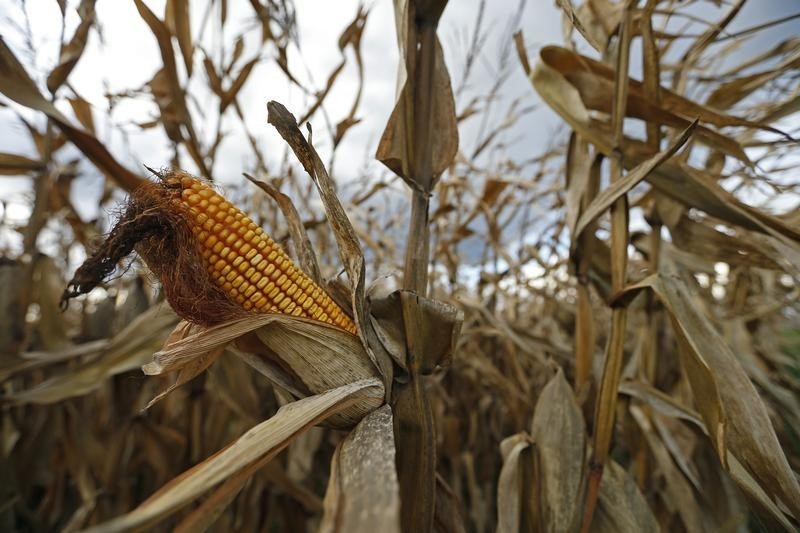By Niu Shuping and David Stanway
BEIJING, April 1 (Reuters) - China's plan to let the market
set corn prices is bad news for international grain exporters,
but should boost the country's struggling corn processors that
use the grain in products ranging from food additives to paper
and textiles.
New demand from corn processing companies, as well as the
feed and ethanol industries, will be vital to help China start
cutting the 250 million tonnes of corn reserves built up under
stockpiling policies, or more than the country can consume in a
year.
In its biggest grain reforms in a decade, China said this
week it will stop stockpiling corn and halt price support
schemes, narrowing the gap between international 0#C: and
local prices 0#DCC: and encouraging the use of local grain
rather than imports of cheaper substitutes, such as sorghum and
the ethanol byproduct distillers' grains (DDGS).
Food processors use corn to make starch, syrup and alcohol,
but China's corn starch industry has been running losses over
the past three years, with more than half of its capacity lying
idle.
"It is good news for the industry," said Fan Chunyan,
secretary general of the China Corn Starch Association
"More companies would raise production and become profitable
and some companies may be able to export their products," said
Fan, adding that utilisation rates could recover to about 70
percent, up from as low as 40 percent in recent years.
Corn starch is used to make thousands of products, including
the food additives lysine and citric acid, which China once was
the world's largest exporter, as well as corn syrup, which can
replace natural sugar in the production of soft drinks and
cakes.
Major players in the industry include COFCO Co
Ltd CNCOF.UL , Global Bio-chem Technology Group Co. Ltd
0809.HK and the Xiwang Group 000639.SZ .
Global agribusinesses Cargill CARGIL.UL and Wilmar
International WLIL.SI also run some corn starch joint ventures
in China.
IMPORTS TO EXPORTS?
The decade-old corn stockpiling policy, which will be
scrapped from the autumn, has pushed domestic corn prices up to
50 percent above international prices, saddling feed mills and
food processors with higher costs.
"Many plants were dead because of the stockpiling policy.
For those which are still alive, definitely there is a chance,"
an executive at a corn processor in the province of Liaoning
told Reuters.
The industry had been suffering losses for many years and
his own company's plant had shut, said the executive, who
declined to be identified.
Chinese feed mills bought a record volume of foreign feed
grains in 2015, which together with corn imports, replaced more
than 42 million tonnes of domestic corn production, about a
quarter of annual consumption.
Beijing controls quotas on low-tariff corn imports, which
encourages users in China to seek out lower priced substitutes
once the quotas have been reached.
Cheap imports of cassava and cassava starch have largely
been used instead of domestic corn in refineries, whose main
products include ethanol and corn syrup. Chinese imports of
cassava hit nearly 10 million tonnes in 2015. GRA/CN
"With the drop in domestic corn prices, soft-drink makers
will increase their use of corn syrup to help cut costs," said
Lief Chiang, an analyst with Rabobank.
The policy change will also slash feed costs for China's pig
industry and boost profits of ethanol producers.
"The feed grain price drop would prolong the high breeding
margins for hog breeders, which are now recovering their herds,
while for the corn processing industry, some products can be
competitive globally," said Chiang.
China's appetite for cheap U.S. ethanol could also wane this
year as domestic companies increase production, said an official
at the China Alcohol Industry Association. China imported a
record volume of ethanol in 2015 due to expensive domestic corn.
"A drop in raw material prices would increase ethanol output
and imports would shrink," said the official, who declined to be
identified.
"China may be able to export ethanol to other countries,
including South Korea and Southeast Asia, and compete with the
United States and Brazil," the official added.
(Editing by Richard Pullin and Ed Davies)
